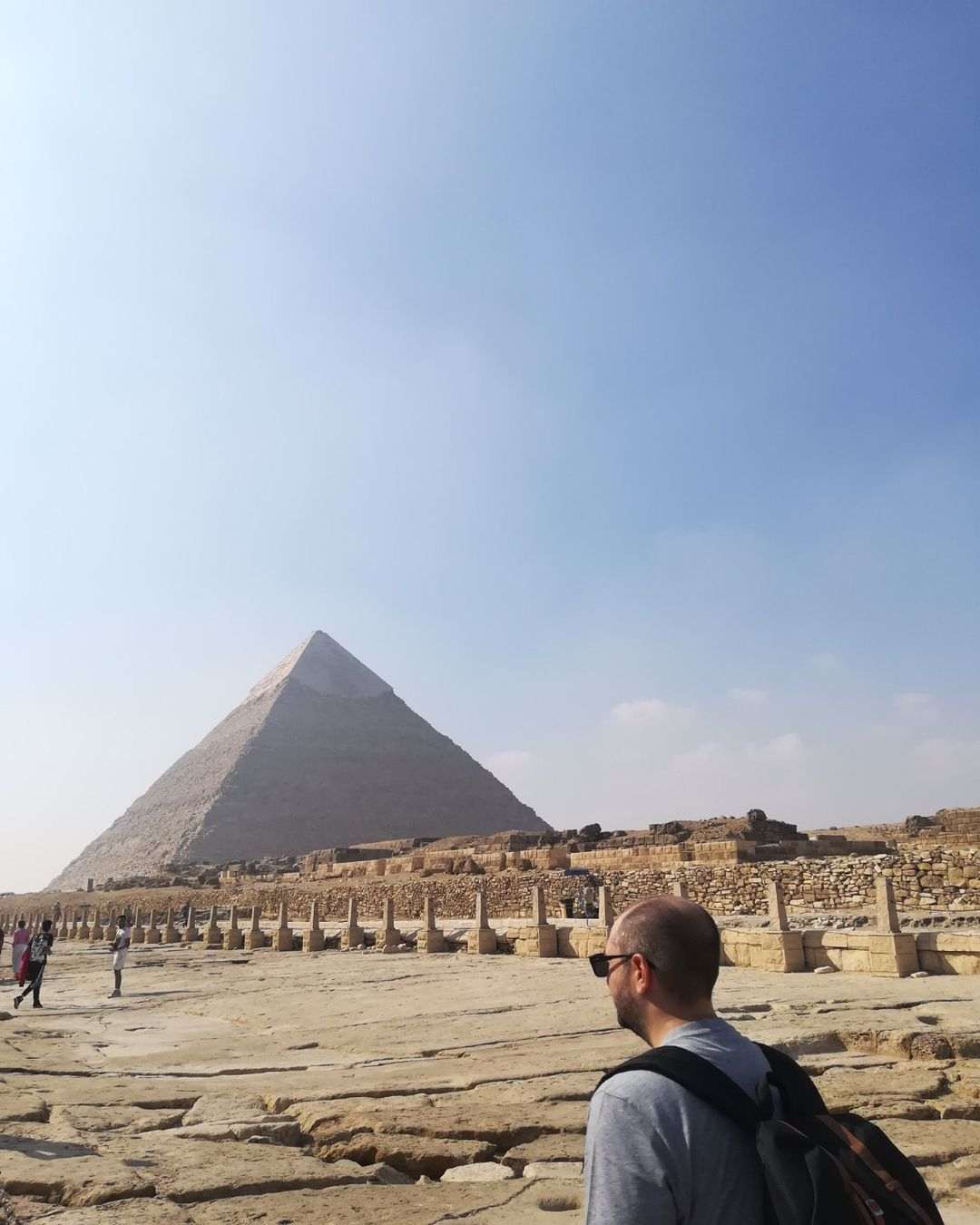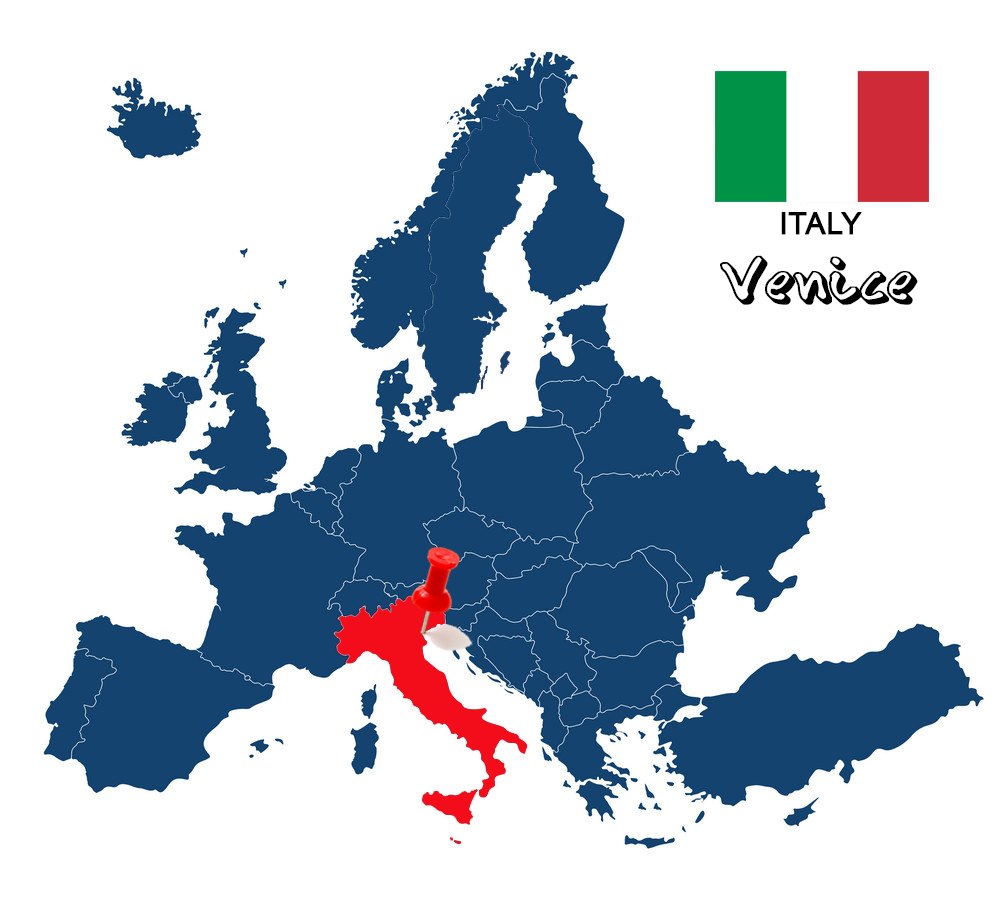
I think that if you ask any person on this planet if he would like to visit Venice at some point in his life, the answer would be "definitely". Of course, my answer was the same. As a Carnival lover, visiting Venice during them was one of my biggest travel dreams and because dreams are good not to be left unfulfilled, I decided to visit it at the height of the carnival. And because once is never enough, after years I came back to explore it in depth and present it to you accordingly.
A few words about the city
Venice is located in eastern Italy and more specifically in the homonymous marshy lagoon, which stretches along the coastline between the mouths of the Padu and Piave rivers, while being the capital of the Veneto region. Built on a group of 118 small islands, separated by canals and linked by bridges, it’s fully listed as a UNESCO World Heritage Site. The population in the municipality of Venice reaches 270.098 inhabitants, while in the wider area (Padua-Treviso) it’s estimated to 1,660,000 inhabitants. Due to its privileged position, Venice was an important trading center in the Middle Ages, which made it rich throughout its history. Apart from trade, however, the "Floating City" or the "Serene City", as it is often called, played an important role in the renaissance, since there acted several artistic movements, and was also the birthplace of the Great Antonio Vivaldi. So I have chosen for you what I think is worthy of attention for someone who is visiting the city for the first time.
Canal Grande
The Grand Canal (Canal Grande), also known as the canalazzo, is the main canal in Venice. It has a length of 3.8 mm and forms the letter S with its path! It starts at Saint Mark’s Square (Piazza San Marco) and ends just outside the city's train station, St. Lucia.
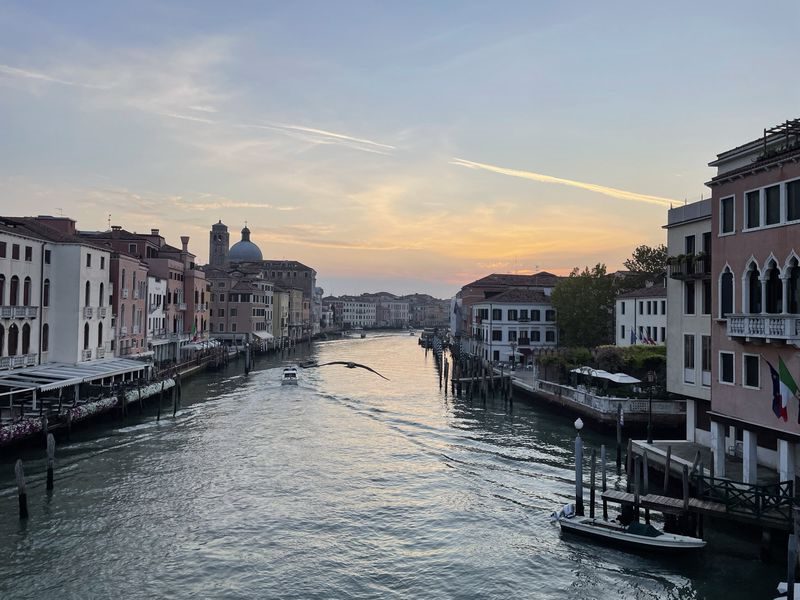
The two areas are joined by the oldest, largest and probably most popular bridge in the city, the bridge Rialto (Ponte di Rialto). Construction began in 1588 and was completed in 1591, and for 300 years was the only way to cross the Grand Canal on foot! Many famous artists and architects of the time, including Michelangelo, were candidates for the design of the bridge, but eventually the honor went to Antony Da Ponte, hence the name of the bridge. At peak hours, this bridge is flooded with people who either want to cross the opposite side of the canal or admire the wonderful view! In fact, during the carnival period, even place a "traffic warden" is placed!
Along the Grand Canal, there are about 170 buildings, most of which were built between the 13th and 18th centuries, and mostly belonged to wealthy merchant families. In my opinion, one of the most beautiful and most photographed is Ca ’d’Oro, the house of gold. An excellent example of Venetian Gothic architecture, created by the famous architect Giovanni Bon, for the wealthy merchant Marino Kontarini, who wanted to create the most beautiful palace in Venice. This particular caress was given because of its decoration, since materials such as gold leaf, ultramarine and other colors were used. Today it operates as a gallery under the name Galleria Franchetti and houses the remarkable art collection of Baron Giorgio Franchetti, which includes great Venetians and non-artists.
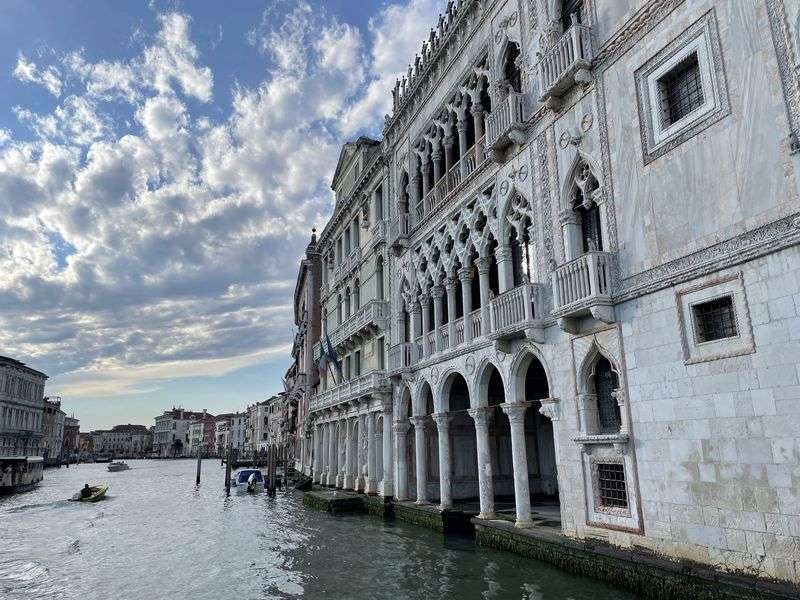
Finally, another building worth seeing up close is Ca ’da Mosto. This is the oldest building on the Grand Canal, which dates back to the 13th century and is an excellent example of Venetian-Byzantine style. To admire this building, as well as all of the above, use the vaporetti (water buses), while the most romantic the famous gondolas.
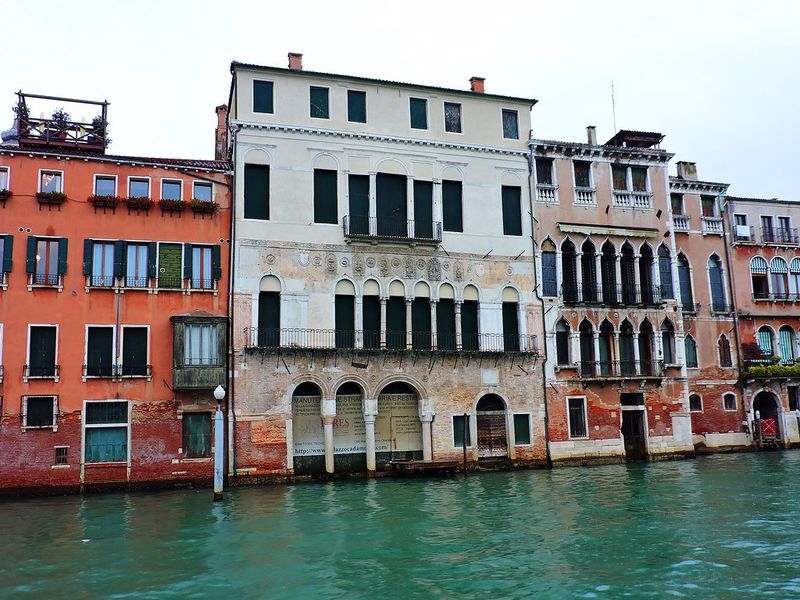
Piazza San Marco
Piazza San Marco is Venice's largest and most beautiful square, and it’s interesting to note that it’s the only one named Piazza, as all the others are referred as Campi (ie fields). Any time of day you visit it, will be full of life, since it’s always full of tourists, who never stop using their cameras, but also pigeons. These birds are so numerous, that they cause problems for the inhabitants, so the government enacts a law that prohibits feeding them. However, the problem has not yet been solved.
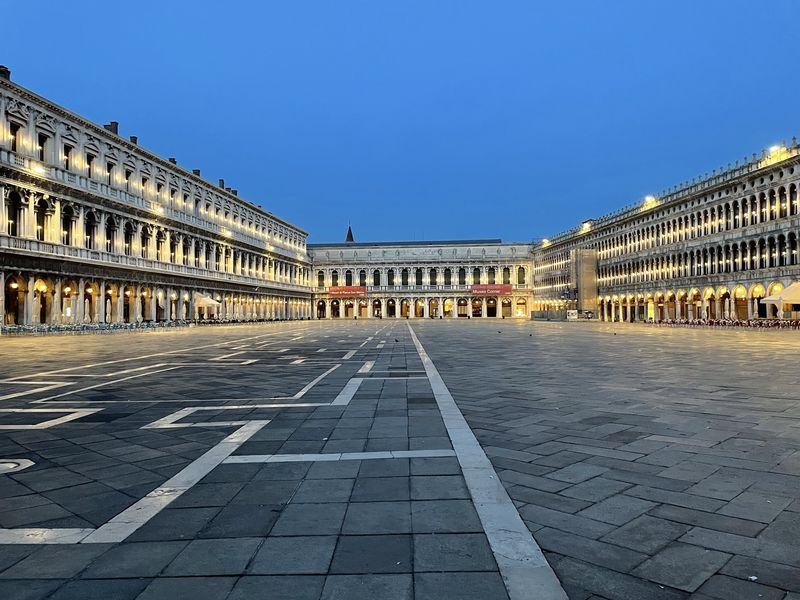
The “jewel” of Piazza San Marco is none other than the homonymous cathedral (Basilica di San Marco). A real masterpiece, built in place of a former temple in 1063, while consecrated in 1094. It was a symbol of power and majesty in Venice and served as a personal chapel of Doge until 1807, where it became the city's cathedral. The lines for entry are over 300 meters, and the wait is always huge, but believe me, it's worth it. There you will admire its monumental mosaics, shining in the sun, its Byzantine dome, the colorful Middle Eastern marbles and just across the bell tower. Finally, there are several important buildings in the square, such as the National Archaeological Museum (Museo Archeologico Nazionale), the central library (Biblioteca Nazionale Marciana), as well as various government buildings (court, cultural center, etc.).
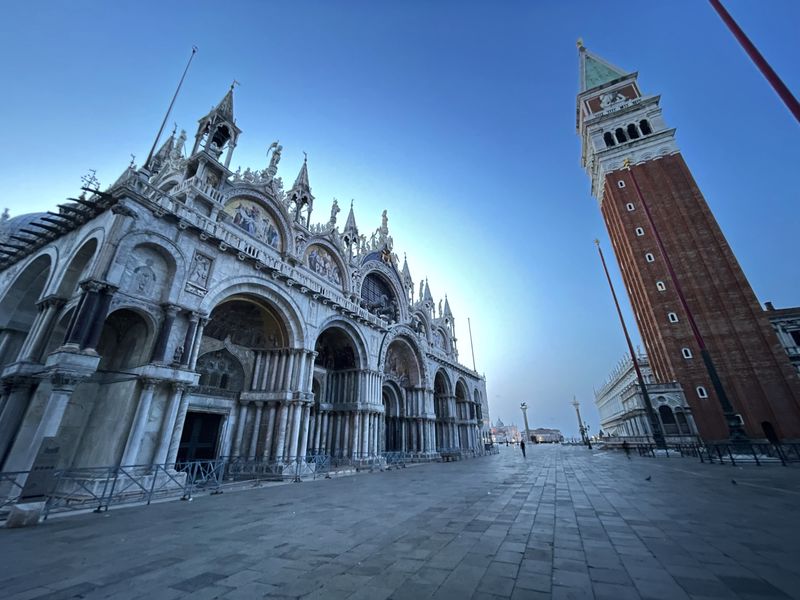
Palazzo Ducale
The dazzling Doge's Palace is one of the most important buildings of Venice and was considered the power center of the city when it was a commercial superpower. It was built in the 14th century in two installments, as the first architect Filippo Calendario, who had made the original designs, was executed for treason in 1385. The east wing was built between 1301-1340 and the west wing, facing the piazzeta, took another 110 years to complete in 1450. The Venetian style of the palace has Gothic and Byzantine influences, exudes magnificence and gives a light architectural structure to the visitor. The decoration is remarkable, with dozens of apartments, offices and halls, the most impressive of which is the Great Council, with the famous mural of the paradise of Tintoreto, which was completed in 1577. Finally, there are several cells in the basement, where those who were to be tried, were detained. When a new prison was built on the other side of the channel Rio de palazzio, these cells stopped being used. The new prison was joined to the palace by the famous "Bridge of Sighs" (Ponte dei Sospiri). The entrance is a bit expensive as it costs 25e, but in my opinion it is worth it.
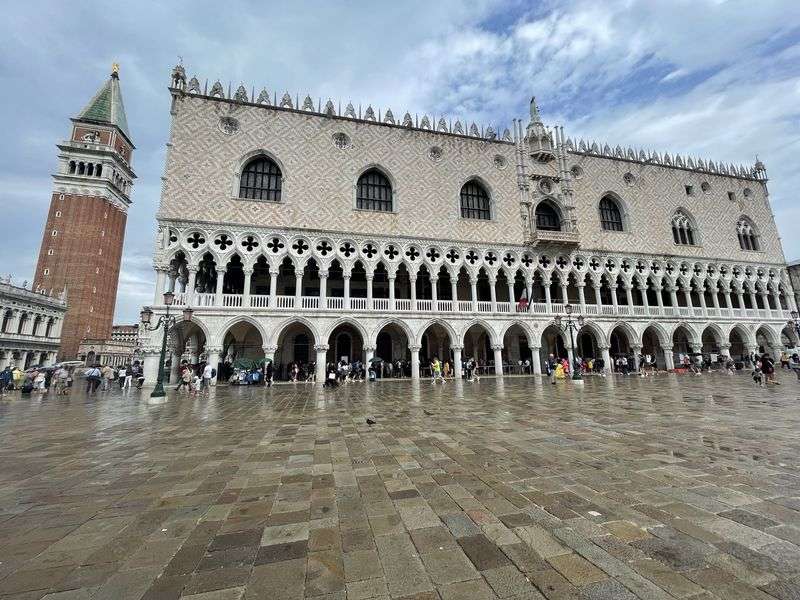
Gallerie dell'Accademia
The Gallery of the Academy (Gallerie dell'accademia) is perhaps the most important place of art in Venice, as it hosts some of the greatest treasures of the so-called school of Venice, created from the middle Ages up to the Renaissance. One could say that its history dates to 1750, when the Academy of Fine Arts of Venice was founded, an educational institution which also specialized in the restoration of works of art. After many adventures due to the political situation in the Italian peninsula, the Academy moved to the current premises, which began operating in 1817. In 1879, the Academy became independent, and two institutions were created, the Academy of Fine Arts and the Gallery of the Academy. The last remained in the Scuola della Carità, although the building still bears the inscription Accademia di Belle Arti. The stunning collection of paintings features the works of famous artists such as Tintoretto, Tiziano, Canaletto, Giorgione, Giovanni Bellini, Vittore Carpaccio, and Veronese, while the entrance costs 12€.
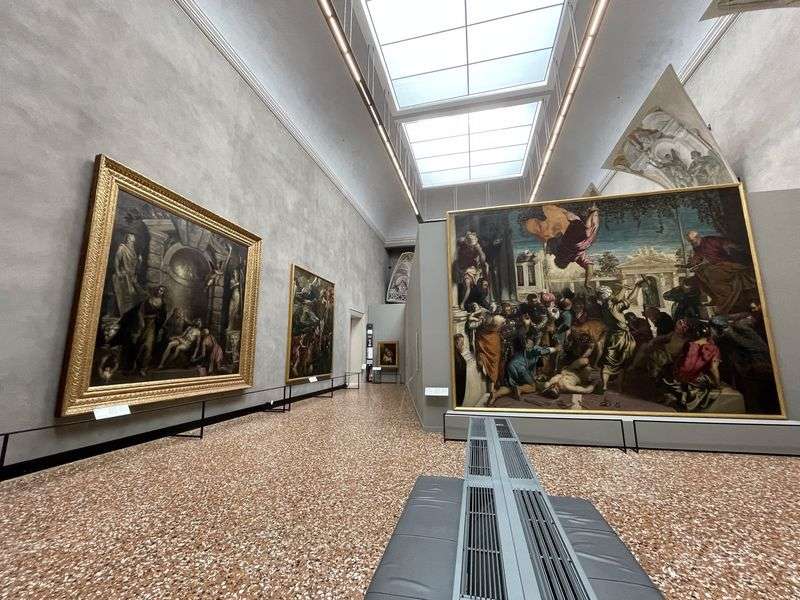
Scuola Grande di San Rocco
The Great School of San Rocco was founded as a democratic brotherhood in 1478, having an important role in the charity race of the time, while it remains active until today. Its popularity, however, rose sharply with the involvement of the famous Italian painter Tintoretto, who had been painting at the School for about two decades (from 1564 to 1587). So the interior is decorated with various scenes from both the Old and the New Testament on the walls, and dozens of paintings and statues, which gave him the reputation of one of the most important artists of the Venetian School.One thing that will definitely impress you is the fact that there are chairs everywhere, since the logic of the museum is to give the opportunity to the visitor to admire almost any work. The entrance costs 13,50€.
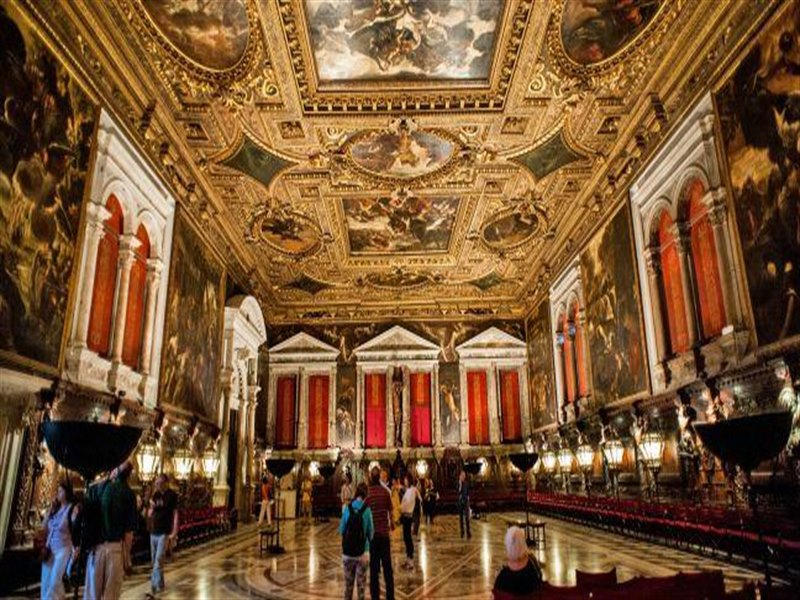
The islands
Venice is surrounded by many small but beautiful islets which can be easily reached by a vaporetto from Piazza San Marco or from the northern part of the city.
The closest of them is San Giorgio Maggiore, located directly opposite St. Mark's square. It hosts the impressive homonymous church that has been a source of inspiration for the renowned painter Monet, the Cini Foundation Art Center, the library and the open-air Teatro Verde Theater.
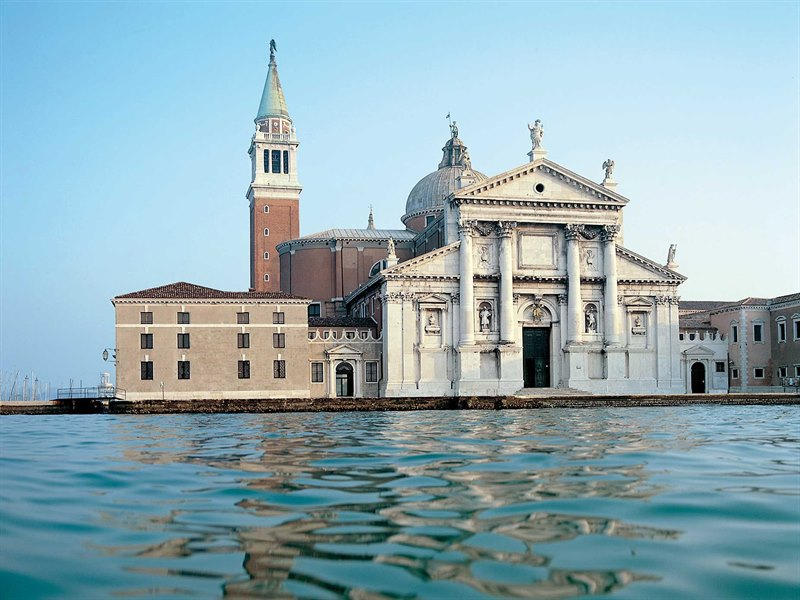
Right next to it, is the long-suffering Lido, which is 12 kilometers long and just two kilometers wide. This particular island is famous for the film festival that is held there every year, and it is also worth visiting the ancient Jewish cemetery.
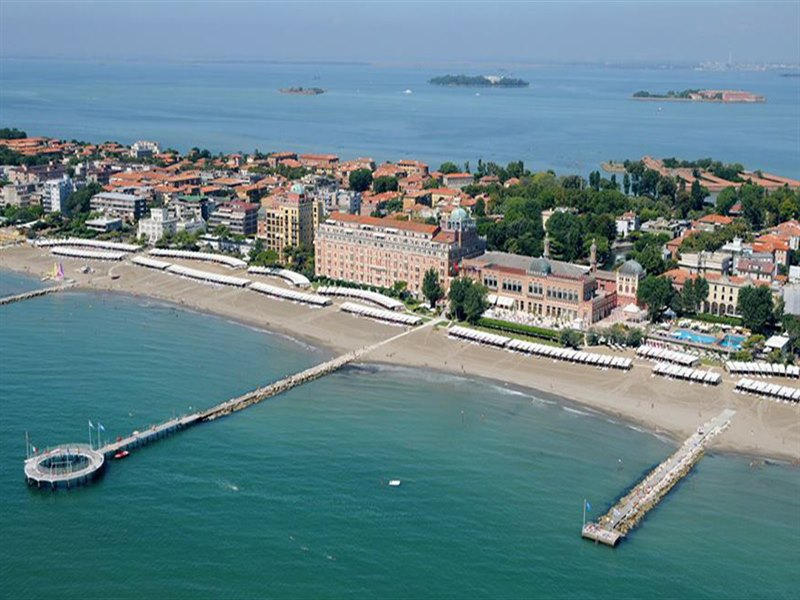
On the other hand, in the northern part of Venice it is worth making a first stop at the Lilliputian San Michele, on which the picturesque and impressive cemeteries of St. Michael are located. Also, a must stop is, of course, Murano, which is internationally known for its glassmaking industry dating back to the 13th century! Although relatively expensive, this glass will be perfect for a souvenir or gift.
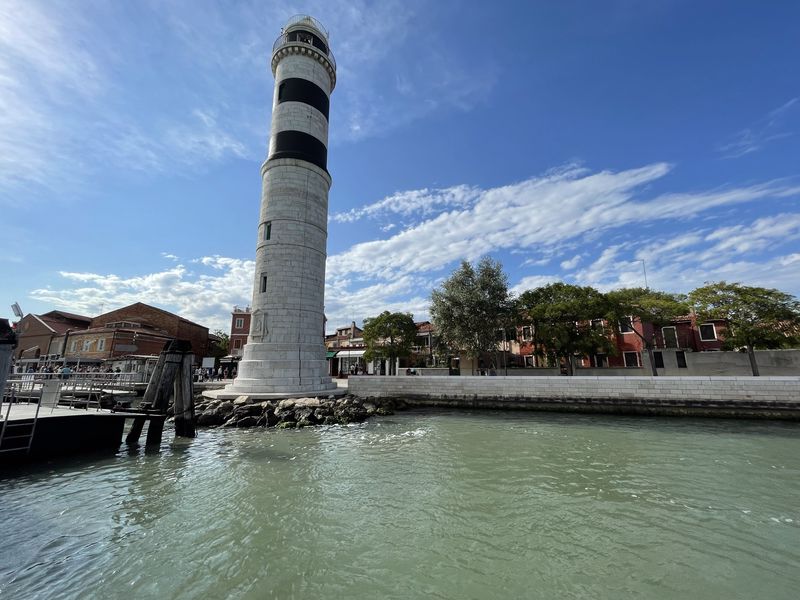
Even further north you will meet three more islands, from where it is said that this sea city began to develop. The first is called Mazzorbo and is really a hidden treasure. There are hidden ancient walls of the 13th century and some of the most notable vines in the area. If I had to choose the most photogenic, however, this would be without a second thought Burano. This fishing village consists of hundreds of colorful houses, which give it the title of one of the most colorful cities in the world. Finally, do not miss the Torcello, which although the quietest hides rare beauties. The island's main attraction is the Cathedral of Santa Maria Assunta, founded in 639 and featuring impressive 12th-century Byzantine mosaics depicting the last crisis.
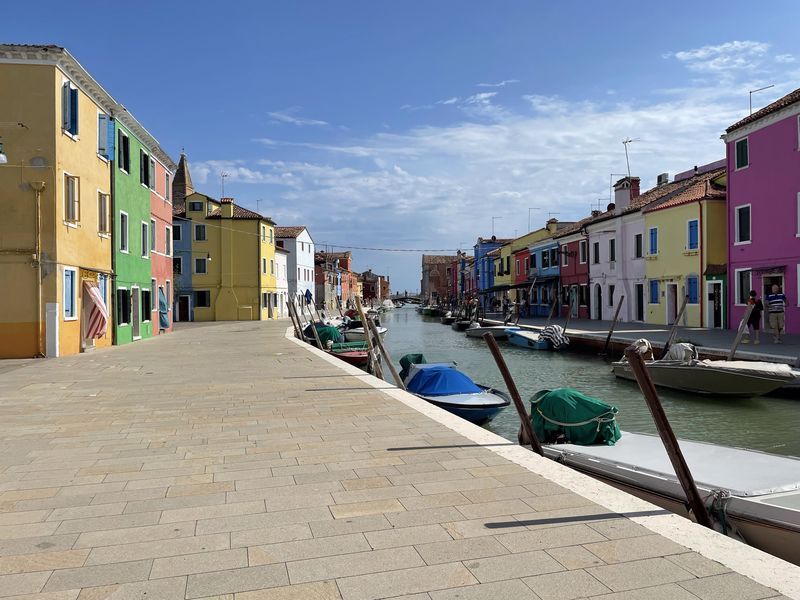
Libreria Acqua Alta
The truth is, this is not a sightseeing thing at all, but it was one of the places that made a big impression on me, so I decided to include it in my report. The Libreria Acqua Alta (High Water Bookstore) is a bookstore different from the others, having been proclaimed as "the most beautiful bookstore in the world." Opening a bookshop in a city that has water instead of roads doesn't seem like a very good idea, but the owner had a different view. He has placed all books, magazines, maps and other items, within natural-sized gondolas, thus protecting them from water overflows, while the rest are stacked on the walls inside waterproof covers. Finally, there is a fire escape, which is simply a door leading directly to a channel! The scenery is absolutely gorgeous and definitely worth a visit even if you don't buy anything.
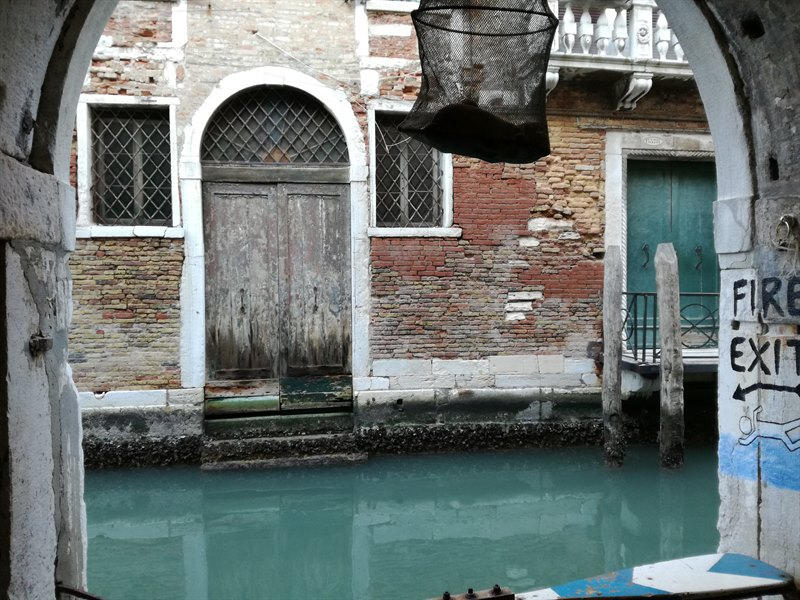
How to go
In Venice there is the Marco Polo Airport, while the city is also served by the airport of the neighboring city of Treviso. Thessaloniki is connected by air with Venice with the latter, via Ryanair. With the right planning, one can find tickets starting from € 17 with return! If you still want a more comfortable flight, you can choose a flight with Austrian Airlines (Marco Polo Airport) with a stopover in Vienna, from 116 € return. Finally, as I emphasize in every article about a city in Italy, a good solution to travel economically, in the neighboring country is by train, since the railway network is easy to use and convenient. So you could try to find a flight to another city like Milan or Bologna and from there visit Venice. Something that will definitely save you time and money.
Where to stay
If I had to find a black spot in the city of Venice this would certainly be the bit of accommodation. Because it is one of the touristiest places in Europe, the prices of accommodation are extravagant, compared always to what they offer. Since you will pay enough for a room, at least look at it being in a central location. So my suggestion is Hotel Campiello. A three-star hotel, located just behind the Doge's Palace and a breath away from St. Mark's square. This is a beautiful hotel, which in relation to the rest offers good value for money.
How to move
Distances in Venice are relatively small, and the city can be easily walked, while cars are prohibited. Nevertheless you will need to cross the canals several times, which means that you will have to take any of the local boats. As I mentioned above, your choices are specific and are none other than Vaporetti, water taxis, gondolas and traghetti.
The former are the most popular means of transport in the city, namely Line 1, which runs the route between Piazzale Roma (where the central bus station is located and where the cars arrive) and St. Mark's Square. You will also need them if you have in the program to visit the Islets of Venice. The ticket costs 7.5 euros, for this it is better to issue a 24-hour card that costs 20e to move freely and without restrictions. The card can be obtained either outside each stop of Vaporetti or from the offices of Venezia Unica.
A little more expensive are water taxis, as they charge depending on the measures you will take, so it is advisable to have been informed from the beginning about the amount you will need to pay. Special rates are applied for routes on Sundays and routes after 10 pm.
Gondolas are a romantic, but very expensive way to move around Venice. The price starts from 70e and reaches up to 100e, depending on the distance and the time it will travel. Nevertheless, they are very delightful, since they very often carry you through hidden canals, but the gondoliers themselves may sing you some aria or well-known opera.
Finally, the fact that to pass from one side of the Grand Canal to the other can only be done by 3 bridges and is also 4km. long, it led to the operation of ferry boats called traghetti, which depart from seven points along the Grand Canal from Santa Maria della Salute to the railway station. Following the signs with the yellow gondolas to the water, you will find this means of transport which you can use for a small fee.
What to eat
In addition to classic pasta, pizzas and ice creams, going to Venice, you should try some of its signature dishes. One of them is the Gnocchi. Something between potato and pasta, associated with celebrations of Halloween from the 16th century. Even Venice is famous for polenta, the food of the poor in the past, which has turned into a gourmet delicacy. It's a porridge made of boiled corn semolina. Also, a traditional dish is the Sarde de Saor, marinated sardines, while the seafood risotto is also special. Finally, perhaps the most distinctive Venetian dish is the cicchetti, which look very much like Spanish tapas, but they are not. These are small portions of food, served before the main meal, in almost every Venetian bar. For delicious pizzas visit Trattoria Agli Artisti Pizzeria, for local flavors Enoiteca Mascareta, for ice cream Gelato di Natura and for coffee or dessert Caffe Florian, in Piazza San Marco and Rosa Salva.
Useful information

In Italy we travel with a passport or a new type of Police Identity Card, where the information is written in Latin characters.
In Venice the language used is, of course, Italian. But most, if not all, speak English, so ask for clarifications in English.
The currency of the country is the euro. Venice is an hour behind Greece (GMT +2).
The Greek Wage Consulate General in Venice is currently suspended and only operates in emergencies. In the city, however, there is the Greek Institute of Byzantine and Post-Byzantine Studies in Venice, located at Castello 3412, Ponte del Greci, 30122 and its telephone number is (0039041) 5226581, where they will surely help.
The passage to and from Venice's airports is simple, as there are regular bus services, which take you to Piazzale Roma.
Not a few times you will have heard that Venice is a city that smells bad because of its canals. This is not entirely true, but you should avoid visiting the city during the summer months. The ideal month to visit is, of course, the February and more specifically, the period of the famous Venetian carnival.
For more information on the city of Venice visit Venezia Unica!
Recommended excursions → Verona, Bologna, Treviso, Padova
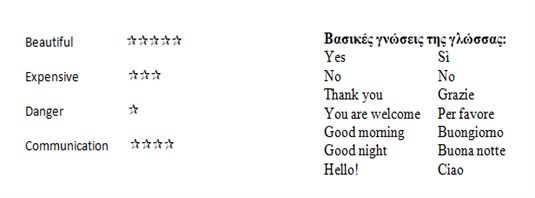
If this article seemed interesting or contributed to your quality information, then you can like my facebook page: o_thessalonikios or follow me on instagram!
Mouzakidis Pantelis







